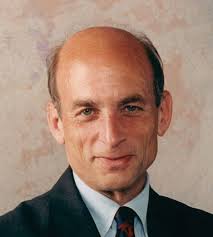Today’s WSJ reports on more evidence of the death of big law under the headline “Pay Gap Widens at Big Law Firms as Partners Chase Star Attorneys.”:
Some of the biggest law firms are paying outsize salaries to star attorneys, in some cases 10 times what they give other partners, in a strategy that is stretching compensation gaps and testing morale at firms. * * *
[F]irms [are] eager to hire and retain proven business generators, whatever their cost, particularly at a time when many companies are reducing spending on outside lawyers. Faced with declining revenues, firms want big-name lawyers who perform mission-critical work and whose billing rates are more resistant to economic downturns.
A majority of big law firms have begun reducing the compensation level of 10% to 30% of their partners each year, partly to free up more money to award top producers* * *
The article discusses reasons for the phenomenon:
Clients generally care more about which lawyer, and not which firm, will be handling their affairs, driving up the value of those lawyers who command loyal client followings. * * * Skadden, Arps, Slate, Meagher & Flom LLP, a New York-based firm which has lost top partners in recent years to rivals including Kirkland, last year widened its compensation spread last year to 5-to-1, from 4-to-1 two years ago. * * *
Firms risk losing top lawyers to high-paying banks and hedge funds. For instance, James Woolery, a former partner at Cravath, known for its merger practice, recently moved to JPMorgan Chase & Co. as co-head of mergers and acquisitions.
The article notes that this is a change from past practice in which
[f]irms typically pay partners based on a variety of factors, including the lawyers’ seniority, the number of hours billed and revenue they have generated, and also softer factors, such as the extent to which they actively mentor and pass along work to other members of the firm.
But it’s not happening everywhere:
A small number of elite firms, such as Simpson Thacher & Bartlett LLP and Cravath, Swaine & Moore LLP, still hew to narrower compensation bands, ranging from 3-to-1 to 4-to-1, typically paying the most to those with the longest service, according to lawyers with knowledge of the firms’ finances.
All of this is discussed in my Death of Big Law, which shows:
- Big law firms can be sustained as firms only if they can maintain firm-level capital, or reputation.
- The partners create this capital by monitoring, mentoring and screening other lawyers in the firm. This gives clients a reason to hire firms rather than lawyers.
- Lock-step seniority compensation incentivizes this commitment to the firm.
- But the Big Law equilibrium is strained by many pressures discussed in the artilce. The firm loses its binding force and has to hire rainmakers to bring in business. These are getting costly because of the competition not only by other law firms but non-law firms like private equity.
- The rainmaker culture changes the lawyers’ incentives from working to build the firm to working to build their books of business. The firm is no longer really a firm but a collection of rent-sharing lawyers.
- The firms can try to generate firm-level profits by increasing their associate leverage. But this is not sustainable, as clients increasingly resist paying high prices for associate work. Clients pay for rainmakers, not firms.
In the end, the number of true firms dwindles into a very small group of Cravath-style elites.
The rest break apart.




